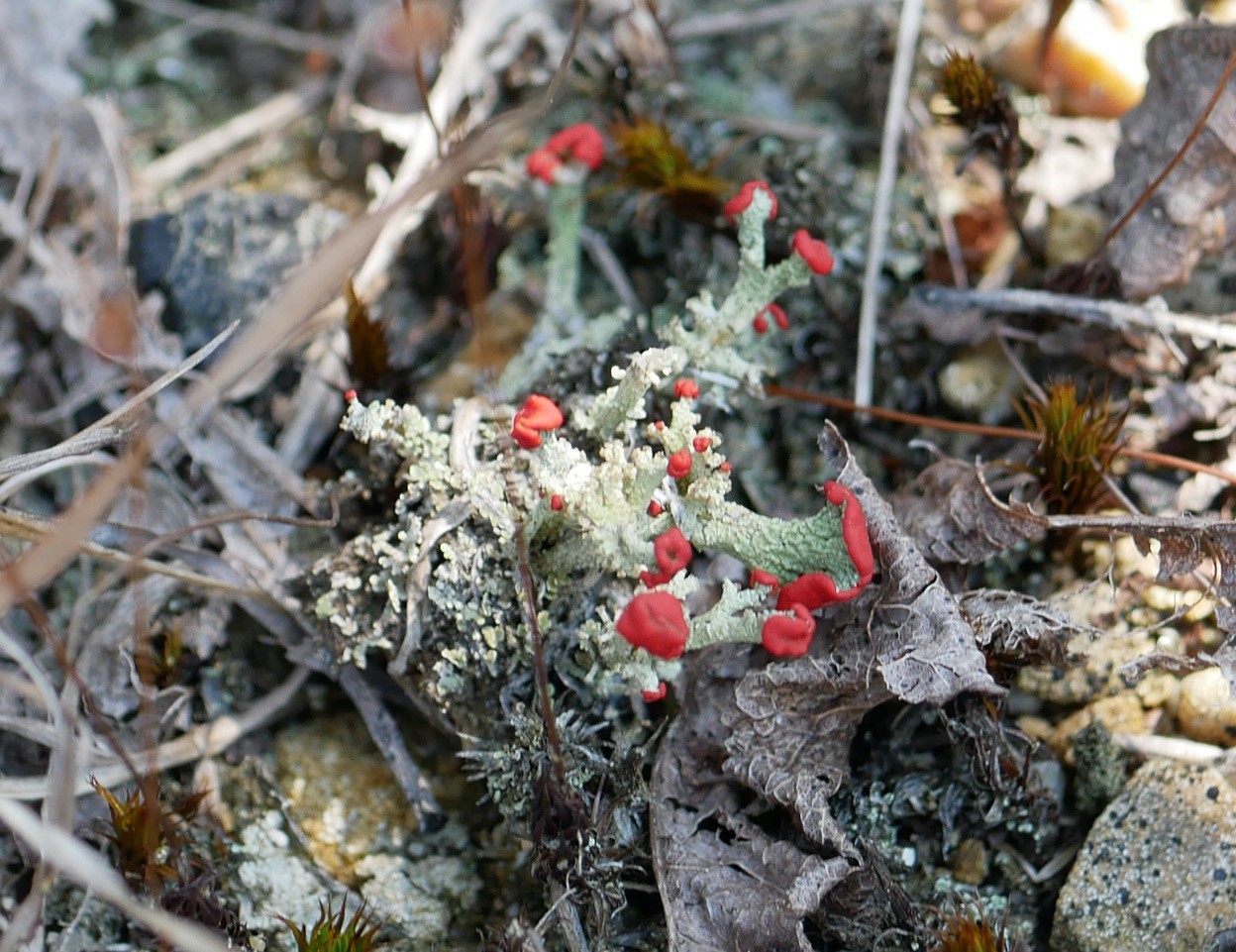By David P. Davis
Newsroom@DominionPost.com
This week at the West Virginia Botanic Garden, 1061 Tyrone Road, we take a diversion from showy blooms and kept garden beds to the wild side of the WVBG. With 4.5 miles of trails and over 80 acres to explore, the WVBG has a multitude of natural areas. Our newest trail, the Pixie Cup Trail, is a footpath that hosts a rich collection of unique specimens.
Let’s start with some of the mosses you might see on the trail. In the more wooded area of the trail, there is a rich collection of mosses, including the ancient-looking club moss with branching stems, class Lycopodiopsida. These plants reproduce with spores and originated in the Carboniferous era. While other lycopods were the size of trees and are now extinct, the club moss is common to the Appalachian region and only reaches a few inches in height. These patches of club moss are found in conjunction with other mosses, commonly with spiky haircap moss.
As the path opens up, you come to a sandy sloping plain that is dominated by sourwood, Oxydendrum arboreum. Sourwood can grow rather large (20 to 50 feet), but as part of the succession of the basin that used to be the water supply for Morgantown, this plant is in a shrub form. Sourwood is unique, as the leaves are tinged with red splotches that continue to enlarge into fall. Sourwood dominates the basin of the WVBG along with black alder shrubs. Where the sourwood dominate, the green and red leaves form lovely scenery all season long.
In the drier areas, you will be able to find the namesake of the trail, pixie cup lichens, Cladonia pyxidate. Lichens rely on a symbiotic relationship between fungi and algae and the pixie cup is a small, delicate green lichen that grows in clusters and looks like small, raised vase-like cups. Typically, where you find the pixie cup, you will also find British soldier lichens, Cladonia cristatella. The British soldier is unique, as the green lichen base is capped with a deep red top, similar to the color of the British soldier uniform.
Also along this trail is a variety of ferns. The most prominent is a large cinnamon fern, Osmundastrum cinnamomeum. The cinnamon fern reaches 3-4 feet tall and prefers wet bog-like areas but will adapt to a range of conditions. It gets its name from the cinnamon color of the fibers found at the base of their fronds.
This trail also has other special inhabitants. For instance, in March and June, you might find the solitary bees swarming around the openings to their underground tubes as they partition with pollen and other foodstuffs for their larvae. Or, you might come across the box turtle nests where eggs have been laid (look for bits of turtle shells here).
Take it all in at the WVBG, and support nature by becoming a member!




